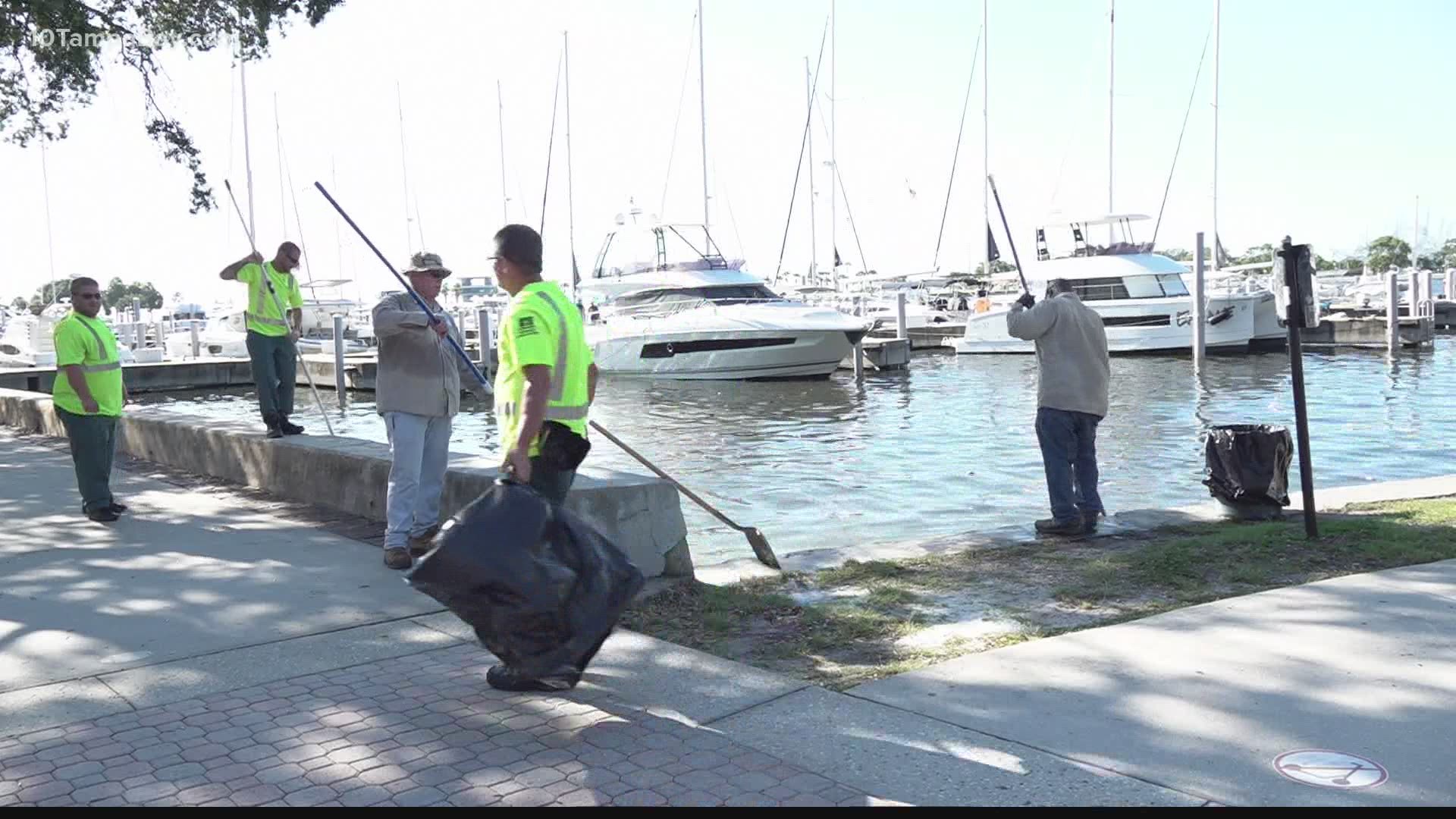ST. PETERSBURG, Fla. — Red tide has been an issue dating back as far as the 1700s. It's been reported in the southern Gulf of Mexico and along Florida's Gulf coast since at least the 1840s.
It wasn't until 1946 that K. brevis, the organism responsible for the red tide, was finally identified as being the cause of disturbance of the marine ecosystem.
In 2021, we are definitely seeing the effects of red tide more than ever within the last few weeks. More than 1.3 million pounds of dead sea life being collected in the Tampa Bay area speaks for itself.
10 Tampa Bay reported on a large goliath grouper that washed up dead on the beach at the Tampa Bay-facing Lassing Park in southeast St. Petersburg. Although its cause of death hasn't been officially determined, the dead fish being found among other deceased sea life in areas where there is a lot of red tide suggests the toxin could be to blame.
We see lifeless bodies of fish pop up all the time, but what about the other animals that we don't hear much about?
Sea Turtles
According to the Florida Fish and Wildlife Conservation Commission, the number of sea turtle stranding cases increases during K. brevis blooms. Impacted sea turtles may swim in circles, lack coordination, exhibit muscle twitching, bob their heads or make jerking movements.
Loggerhead sea turtles are most affected. Recovery is possible, FWC says, but it can take up to 50 days for their bodies to be free of toxins.
Seabirds
Since seabirds depend on fish to survive, FWC reported huge die-offs linked to contaminated fish.
Double-crested cormorants, lesser scaups, and brown pelicans are most commonly affected by red tide. They'll be weak, show signs of seizures or be unable to stand. Sometimes, they'll have oral or nasal discharge.
Dolphins
Between June 1987 and May 1988, more than 740 bottlenose dolphins stranded. Many were already dead when they were found.
According to FWC, there've been four "notable bottlenose dolphin die-offs" since then – three of which were in the Florida Panhandle. In one of those, nearly 100 dolphins died around a period of dense K. brevis blooms. Almost all of the dead dolphins had brevetoxins in their bodies.
Manatees
Researchers have been suspected red tide as the culprit behind Florida manatee deaths since at least 1965.
In 1982, FWC says "numerous" manatees were sickened during a bloom. Deaths continued weeks after red tide conditions improved. This was followed by a large-scale die-off in 1996.
"Researchers believe brevetoxins accumulated in filter-feeding organisms attached to seagrass blades, which were then eaten by manatees," FWC explains.
There have been red tide-related manatee deaths in southwest Florida in 2002, 2003, 2005, 2007 and 2013.
- Can paychecks keep up with the rising cost of living?
- Tampa man faces 1st sentencing for felony in US Capitol riot
- Tick season is here: What you need to know if you find one and how to keep them out of your home
- Florida among 4 states fueling latest COVID-19 wave as new cases nearly double
- Red tide at the beach: See the latest conditions
- A Frank Conversation: New podcast explores race, religion, politics and more
►Breaking news and weather alerts: Get the free 10 Tampa Bay app
►Stay In the Know! Sign up now for the Brightside Blend Newsletter

